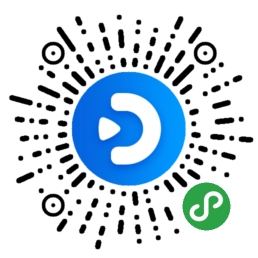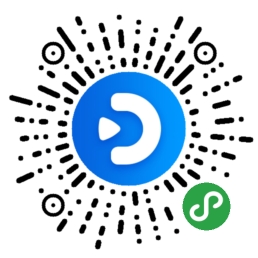谷歌(GOOG.US)2025年第一季度业绩电话会
文章语言:
简
繁
EN
Share
Minutes
原文
会议摘要
Alphabet reported strong Q1 2025 earnings, showcasing double-digit revenue growth across various sectors, notably driven by AI advancements. The company highlighted the launch of Gemini 2.5, its leading AI model, and the success of AI-powered features in search, subscriptions, and cloud services. Alphabet achieved consolidated revenues of $90.2 billion, with significant growth in Google Services and Google Cloud revenues. The company also noted strong operating income and margin expansion, driven by healthy revenue growth and a favorable mix shift. Alphabet plans to continue investing in AI and cloud infrastructure.
会议速览
Alphabet held its first quarter 2025 earnings conference call, featuring remarks from the company's leadership about business operations, financial performance, and a discussion of forward-looking statements.
The company reports robust growth with double-digit revenue increases, fueled by AI advancements in search and the successful launch of Gemini 2.5, the industry's leading AI model. Subscriptions surpassed 270 million, driven by YouTube and Google 1, while Cloud solutions saw rapid expansion due to high demand. Upcoming events promise further innovation showcases.
Google highlights its significant advancements in AI, emphasizing investments in AI infrastructure, world-class research, and product integration, including the launch of powerful new models and GPUs, and the integration of AI into everyday devices and platforms.
The company highlights significant advancements in AI technologies, including the expansion of AI overviews and the introduction of AI mode, addressing more complex queries. It also discusses major innovations in Google Cloud, focusing on AI leadership, cost-effective AI solutions, and partnerships with global brands. Additionally, the update covers YouTube's 20th anniversary and its growing subscription and podcast user base, as well as Waymo's expanding paid passenger service and ride-hailing capabilities.
Google reports a 10% year-on-year increase in services revenues to $77 billion, driven by strong growth in search and YouTube advertising, particularly in financial services and retail. The company sees robust search revenue growth worldwide, with over 2 billion daily users and 5 trillion annual searches. AI overviews have expanded significantly, increasing commercial queries, while visual queries through Lens show a 10% growth in shopping users. AI-driven ad campaigns and features are enhancing advertiser value and matching ads to more relevant search queries.
The company focuses on resolving advertisers' challenges by integrating AI into the marketing process, enhancing audience insights, generating customized imagery, and improving ad placements across various platforms, resulting in significant increases in conversion rates and engagement.
In Q1 2025, Alphabet reported strong revenue growth of 12% to $90.2 billion, driven by double-digit increases in search, YouTube advertising, subscription platforms, devices, and Google Cloud. The company saw a revenue mix shift towards Google search, while network revenues declined. Operating income rose 20% to $31 billion, with a 33.9% operating margin, reflecting healthy revenue growth and moderated compensation growth. Google services revenues grew 10% to $77.3 billion, with notable strength in Google Search and YouTube advertising and subscriptions. Google Cloud revenue increased 28% to $12.3 billion, demonstrating robust growth in GCP and Google Workspace.
The company reported Q1 revenues of $450 million and an operating loss of $1.2 billion, with a significant CapEx of $17.2 billion primarily invested in technical infrastructure. Shareholder returns included $15.1 billion in share repurchases and $2.4 billion in dividends, with a 5% increase in the quarterly dividend declared. For 2025, the company anticipates $75 billion in CapEx, facing pressures from higher depreciation due to increased investments. Revenue in Google services will be affected by the financial service vertical's performance, while cloud revenue growth may vary due to capacity deployment timing.
The company experienced broad-based strength across various verticals in Q1, notably in finance, insurance, retail, healthcare, and travel. The speaker highlights the significant increase in commercial queries driven by AI overviews, which are expanding to new users and providing responses for more questions, contributing to higher satisfaction and search usage. They express confidence in further expanding AI overviews to more products over time.
The discussion highlights the recent launch of ads within AI overviews on mobile in the US, aiming for monetization at approximately the same rate as before. The focus remains on driving efficiency and productivity across the organization, including operating expenses and CapEx, with efforts to repurpose efficiencies into innovation investments. Additional strategies include moderating compensation growth, optimizing real estate footprint, and ensuring technical infrastructure investments are utilized efficiently.
The speaker discusses the significant advancements in AI, particularly with models like 2.5 Pro and Flash, driving consumer AI experiences across the product portfolio, including search and the Gemini app. They highlight increased user engagement and positive feedback, especially with longer queries in search and the well-received Gemini Live and Deep Research features. Additionally, they address the flexibility of investment priorities in response to potential macroeconomic downturns, emphasizing the importance of product innovation and consumer utility in driving differentiation in the AI landscape.
Google plans to invest $75 billion in CapEx this year, focusing on supporting Google services, Google Cloud, and Google DeepMind to meet high customer demand. Despite macroeconomic uncertainties, the company emphasizes long-term innovation and responsible investment, driving efficiency and productivity across the business. Consolidation of teams and rapid innovation are key strategies to maintain resilience and growth.
The company is deploying strategies to increase the daily active user (DAU) count for Gemini, aiming to close the gap with ChatGPT. Momentum is seen in product feature introductions and model advancements, leading to increased adoption and usage. The best model is claimed to be driving higher engagement among the 1.5 billion AI-interacting users. Excitement surrounds the upcoming roadmap for the Gemini app. On the advertising side, both brand and direct response ads experienced solid growth in Q1, bolstered by cultural events and strong contributions from finance and retail sectors. YouTube's operating metrics were strong, with robust watch time growth particularly in Shorts and living room categories, instilling confidence in the platform's creator ecosystem.
Google has extensively integrated AI, particularly through its Gemini models, across various internal operations and products, including coding, customer service, and finance. The AI deployment has transformed workflows, enhancing efficiency and user experience. AI mode in search has received positive feedback for its ability to handle longer, more complex queries, enabling users to undertake more complicated tasks such as product comparisons and trip planning.
Despite record-high margins, the company faces accelerating depreciation expenses due to increased infrastructure investments. Efforts focus on continuous efficiency improvements and leveraging AI to manage workloads, aiming to offset rising costs while preparing for long-term growth. Discussions also touch on the aggressive scaling of Waymo, contemplating its long-term business model between licensing and standalone operations.
The speaker highlights Waymo's focus on developing the world's best driving technology, emphasizing partnerships with companies like Uber and Mo for operational scaling and fleet management. They also mention the exploration of personal ownership models and the importance of safety and driver experience.
The discussion explores the development and future of AI-powered search interfaces, emphasizing their distinct experiences and experimental approaches. Additionally, it delves into the financial aspects, highlighting healthy gross margin expansion driven by improved revenue mix, network revenue declines, and efficiencies in technical infrastructure and headcount growth.
The growth in direct response on YouTube is attributed to multiple factors, including the effective use of AI-powered tools by customers, the increasing monetization of Shorts, and the platform's vast content library, with over 20 billion videos and 20 million daily uploads.
The Q1 2025 earnings call concludes with the speaker thanking participants and announcing the next call for the second quarter. Participants are wished a good evening before disconnecting.
要点回答
Q:What are the highlights of Gemini 2.5 and its performance?
A:Highlights of Gemini 2.5 include it being the most intelligent AI model, achieving breakthroughs in performance and being widely recognized as the best model in the industry. It received positive feedback from developers and consumers and performed exceptionally well on benchmarks. Gemini 2.5 Pro is state-of-the-art and debuted at number one on the chatbot arena with significant margins, showing substantial improvements in reasoning, coding, science, and math capabilities.
Q:What are the key elements of Alphabet's AI stack?
A:The key elements of Alphabet's AI stack include AI infrastructure, world-class research including models and tooling, and products and platforms. Specifically, the global network is robust and resilient with over 2 million miles of fiber and 33 subsea cables. Google offers the industry's widest range of GPUs and invests in next-generation capabilities like the 7-generation TPU and Gemini 2.5 Pro.
Q:How is Gemini 2.5 Pro impacting developers and users?
A:Active users in AI Studio and Gemini API have grown over 200% since the beginning of the year, and Gemini 2.5 Flash enables developers to optimize quality and cost. Image and video generation models Imagine 3 and Vo 2 are rolling out broadly and are powering incredible creativity.
Q:What is the reach of Gemini models and AI in Google's products?
A:All 15 of Google's products with a half a billion users now use Gemini models. Examples include Android and Pixel, where AI is integrated into camera, voice, and screen-sharing features to simplify tasks for users. Google Assistant on mobile devices is being upgraded to Gemini, and similar upgrades are planned for tablets, cars, and phone-connected devices.
Q:How is Search AI contributing to Google's mission and user experience?
A:Search AI is one of the most revolutionary technologies for enabling and expanding Google's information mission. It is already contributing to the growth of the number and types of questions that can be answered by search, as evidenced by the success of AI overviews, which has over 1.5 billion users monthly. Features like AI mode, released in March, expand what AI overviews can do with advanced reasoning and multimodal capabilities, helping with complex queries.
Q:What business results were shared at Cloud Next regarding AI?
A:At Cloud Next, over 500 companies shared the business results they are achieving by working with Google. These results highlight the value of Google's AI capabilities for training and inference, particularly for AI leaders and global brands like Verizon, as well as for handling highly sensitive data and meeting regulatory requirements.
Q:What are the capabilities of Google Agent Space?
A:Google Agent Space enables employees to find and synthesize information from within their organization, converse with AI agents, and take action with their enterprise applications. It combines enterprise search, conversational AI, chat, and access to Gemini and third-party agents.
Q:What are the updates on YouTube's user base and features?
A:YouTube now has over 1 billion monthly active users and has expanded its premium offerings, such as Ad-free TV in the US. YouTube is number one in streaming watch time in the US for two consecutive years, and YouTube Music and Premium have reached over 125 million subscribers globally.
Q:What updates are provided about Waymo's progress?
A:Waymo has expanded its paid service in Silicon Valley, partnered with Uber to expand in Austin, prepared for a public launch in Atlanta, and announced Washington, DC as a future ride-hailing city. Waymo is serving over a quarter of a million paid passenger trips each week and is progressing towards airport access and freeway driving capabilities.
Q:What recent developments have been made in the search ads and partnerships areas?
A:In the search ads and partnerships areas, Google has seen robust growth in revenues worldwide with over 2 billion daily search users and 5 trillion annual searches. AI overviews have increased the volume of commercial queries. The search ads business is adopting AI for campaign management and achieving better results for customers and the business.
Q:What was the revenue growth for the quarter and how was it driven?
A:The revenue growth for the quarter was $77 billion, up 10% year on year, driven by strong search and YouTube performance, partially offset by a decline in network revenues.
Q:What new features and improvements have been introduced to enhance the search experience?
A:New features and improvements introduced to enhance the search experience include AI overviews to increase opportunities for businesses to connect with consumers, Lens for visual queries, and enhancements in ads targeting to make ads more relevant to search queries.
Q:How is the Google Ads business leveraging AI?
A:The Google Ads business is leveraging AI to help businesses adopt AI-powered campaigns, enhance ad value, and solve advertisers' pain points, such as creating, distributing, and measuring performant ads. AI is used across the marketing process, from audience insights to ad placements, and is resulting in significant increases in conversion rates and cost efficiency for businesses.
Q:What achievements have been made in the YouTube advertising business?
A:The YouTube advertising business has achieved strong growth with revenues more than doubling year over year. Successful collaborations and partnerships have been made, as seen with the partnership between brand Toyota and creator Zack King, which lifted brand awareness.
Q:Which partnerships are being highlighted and what are their objectives?
A:The partnerships being highlighted are with Roblox and Google Ad Manager. The objectives are to bring immersive ads to gamers, particularly reaching Gen Z gamers with ads that blend seamlessly into the gaming experience, and to launch a YouTube Shorts effect to help people release iconic Roblox heads and inspire fans to create content at scale.
Q:What are the revenue and cost growth figures for the first quarter?
A:Consolidated revenues for the first quarter were $90.2 billion, an increase of 12% or 14% in constant currency. Total cost of revenue was $36.4 billion, up 8%. Sales and marketing expenses decreased 4%, and R&D investments increased by 14%.
Q:What are the changes in operating expenses and operating income for the first quarter?
A:Total operating expenses increased 9% to $23.3 billion, with R&D investments increasing 14% and sales and marketing expenses decreasing 4%. Operating income increased 20% to $31 billion, with an operating margin of 33.9%, representing a 2.3 point margin expansion.
Q:What was the net income and earnings per share for the first quarter?
A:Net income increased 46% to $34.5 billion and earnings per share increased 49% to $2.81 per share for the first quarter.
Q:How did Google Services revenues perform in the first quarter?
A:Google Services revenues increased 10% to $77.3 billion, with robust performance across Google search and YouTube advertising and subscription revenues.
Q:What were the revenues and operating income for the Google Cloud segment in the first quarter?
A:The Google Cloud segment had revenues of $12.3 billion, an increase of 28%, and Google Cloud operating income increased to $2.2 billion with an operating margin of 17.8%.
Q:What are the financial highlights for other bets in the first quarter?
A:For the first quarter, other bets had revenues of $450 million and an operating loss of $1.2 billion, with the year-on-year decline in revenue and increase in operating loss reflecting a milestone payment received in the first quarter of 2024 for CapEx.
Q:What is the CapEx investment expectation for full-year 2025 and how does it affect expenses?
A:The CapEx investment expectation for full-year 2025 is approximately $75 billion. This investment level may fluctuate from quarter to quarter due to changes in the timing of deliveries and construction schedules. Expenses will be affected by higher depreciation due to an increase in technical infrastructure assets placed in service and some headcount growth in 2025.
Q:What are the main factors contributing to the strength across verticals in Q1?
A:The main factors contributing to the broad-based strength across verticals in Q1 were primarily led by the insurance, retail, healthcare, and travel sectors within the finance category.
Q:What potential impacts does the change to the minimus exemption have on the ads business in 2025?
A:The change to the minimus exemption is expected to cause a slight headwind to the ads business in 2025, primarily from APEC-based retailers.
Q:How are AI overviews impacting search satisfaction and query trends?
A:AI overviews are driving higher search satisfaction and search usage. They have been expanded to date for AI overviews, both in terms of launching to new users and providing responses for more questions, and are central to answering the core question here.
Q:What is Google's approach to re-engineering the cost base and managing productivity and efficiency?
A:Google's approach to productivity and efficiency has not changed; it is still focused on driving efficiency and productivity throughout the organization in operating expenses and CapEx. The company is working hard to offset headwinds and is focusing on continuing to moderate the pace of compensation growth, assessing the real estate footprint, and optimizing the build-out and utilization of technical infrastructure.
Q:How is Gemini app performing and what recent actions have been taken to capitalize on its momentum?
A:The Gemini app has seen increased momentum, particularly over the last few weeks, with users responding well to new models and innovations such as Gemini Live, which is based on Project Astra. The company has recently organized itself better to capitalize on this momentum.
Q:What is Google's planned investment in CapEx and how does it plan to support customer demand?
A:Google plans to invest approximately $75 billion in CapEx this year. It wants to ensure it ramps up to support customer needs and demands, particularly in areas like Google Cloud and Google DeepMind, where there is strong customer demand.
Q:What is the company's strategy for increasing the Daily Active Users (DAUs) of Gemini?
A:The company is focusing on the momentum of product features they've been introducing, which has resulted in increased adoption and usage. The strategy includes leveraging recent advances in the model frontier and continuing to innovate with AI features for the Gemini app.
Q:What trends are being observed in brand advertising on YouTube in the first quarter and early second quarter?
A:Brand advertisers on YouTube have experienced solid growth in the first quarter, with strong contributions from cultural events like Coachella and March Madness. Finance and retail verticals also provided robust contributions. The operating metrics for YouTube in Q1 were strong, with watch time growth particularly in areas like Shorts and living room content.
Q:Where is Google seeing the most usage and deployment of AI internally?
A:Google is seeing extraordinary focus and excitement around AI internally, with early use cases being transformative. The most significant deployment is in coding, where AI suggests solutions in 30% of code checked in. AI is also being used across all parts of the company, with customer service teams leading the way by enhancing user experience and efficiency. The learnings and expertise from Google's solutions through the cloud are being embedded in various workflows.
Q:How is AI mode being integrated into Google's search function and what is the user feedback?
A:AI mode has been integrated into Google's search function, bringing Gemini models into search results. This has led to users typing longer, more complex queries and appreciating features like clean design, fast response time, and the ability to undertake more complicated tasks. Positive feedback includes product comparisons and planning activities like trips. The company is focused on improving AI mode and the Gemini app, observing positive user attraction.
Q:Despite the recent rapid increase in depreciation expenses due to investments, does the company believe it has enough levers to offset rising infrastructure costs?
A:The company believes that it has enough levers to offset the rising infrastructure costs even with the recent depreciation expense acceleration. The details of these levers were not provided in the transcript.
Q:What is the long-term business model for Waymo and has a decision been made regarding it?
A:The long-term business model for Waymo is still under consideration, with the company yet to decide whether it will operate as a standalone ride-sharing or delivery autonomous vehicle business or as a long-term licensing model. No specific decision has been mentioned in the transcript.
Q:What are the strategies being used to manage profitability and investments?
A:The company is focusing on productivity goals and efficiency as a continuous effort, making investments across the organization to drive long-term growth, and using AI to manage a larger scope of work. They are offsetting some headwinds with efficiency gains, investing in products and services to drive growth, and exploring opportunities for investment while ensuring a resilient long-term growth profile.
Q:What is the significance of the progress in AI integration within the company?
A:The company is excited about the progress made in integrating AI, which allows for a variety of business models and optionality across geographies, as well as the potential for personal vehicle ownership. AI is being utilized across several functions to manage a larger scope of work, and partnerships are being formed for maintaining vehicle fleets and operations.
Q:How is Waymo advancing with its partnerships and business model?
A:Waymo is advancing with various partnerships, such as with Uber, which is highlighted by rider satisfaction and upcoming paid rides in Atlanta. They are building a network of partners for vehicle fleet operations, including a recent partnership with Mo in Phoenix and Miami, and are exploring future options around personal vehicle ownership. Safety, the driver experience, and business model progression are being emphasized operationally.
Q:What are the plans for AI integration into Google's consumer experiences?
A:Google plans to have AI overviews scaling up for their user base and AI mode as the forefront of an AI-forward experience. The discoveries made in AI mode will be beneficial for AI overviews and the broader user base. The goal is to cater to the most advanced users while ensuring a billion and a half people use search in a more general manner. User feedback, satisfaction, and experience will guide the future development of these AI features.
Q:What factors are contributing to the gross margin expansion in Google's financials?
A:Gross margin expansion is being driven by revenue mix changes, with search growth and a decline in network revenue which has a higher cost of goods sold (COGS). The change in revenue mix is positively impacting the gross margin. Additionally, efficiencies in technology and moderation of headcount growth and compensation have helped offset the increase in depreciation.
Q:How is YouTube driving revenue through direct response ads?
A:The improvement in direct response on YouTube is attributed to factors such as customer performance using AI tools and the progress made in closing the monetization gap, especially in the U.S. YouTube has celebrated its 28th birthday, has over 20 billion videos, and gets 20 million videos uploaded daily. These factors, along with continued efforts to help customers improve ad performance, are driving the improvement in direct response revenue.

Alphabet, Inc.
Follow





